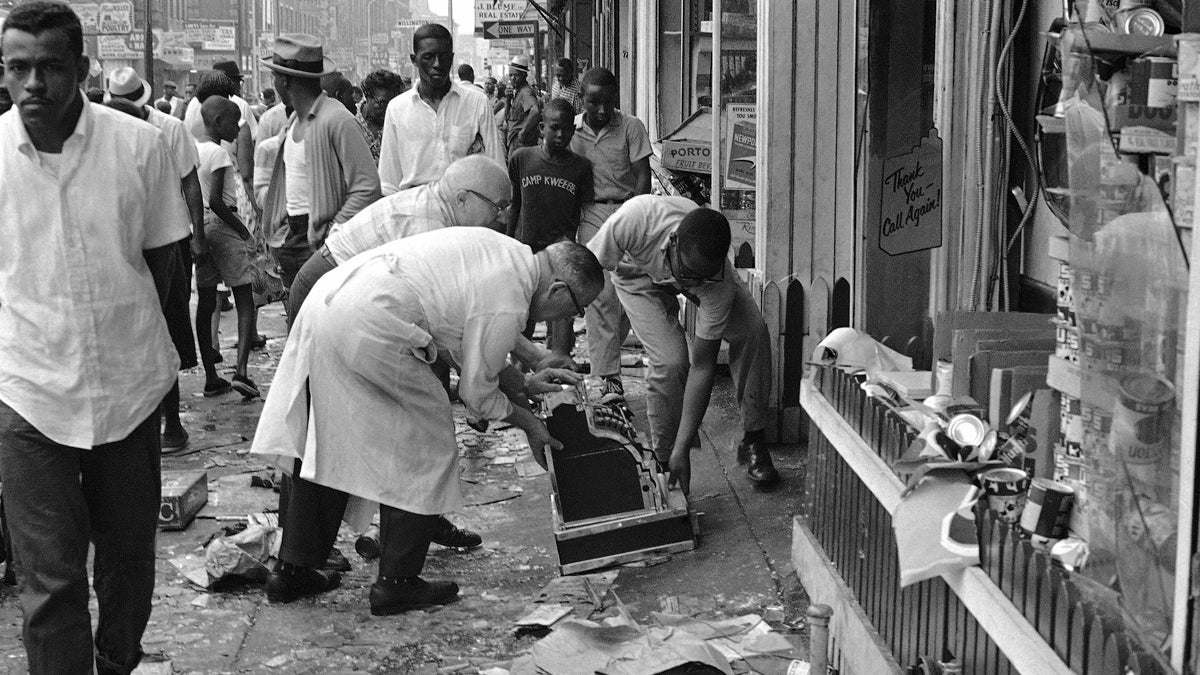1964 North Philly riots: Why destroy their own neighborhood?

Workmen pick a cash register off the sidewalk in front of smashed store, Aug. 29, 1964, wrecked during wild night of looting and rioting in North Philadelphia. Rioting that ended in injuries to scores and widespread property damage apparently began in scuffle during a routine arrest. (John F. Urwiller/AP Photo)
Long after the fires from the riots had finally burned out, one question lingered: “Why did they destroy their own neighborhood?” Judge Frederica Massiah-Jackson thinks back to those days in August 1964, when Columbia Avenue erupted.
“Why did they destroy their own neighborhood?”
“Why did they loot their own streets?”
In his book titled, Rivers of Blood, Years of Darkness, author Robert Conot wrote about the 1964 Watts riots in California:
“If a man has no control over his own fate, he loses interest in the future. If he cannot profit from his own labors, he loses ambition. And if he is beaten back in every attempt to improve himself, he loses hope.”
So too, on Columbia Avenue, the fear, the desperation and the loss of hope sparked the confrontations. Most importantly, the neighborhood history of oppression and aggression and helplessness.
I was only 13 years old when Columbia Avenue erupted. Although our family lived a few blocks away at 16th and Jefferson Streets, my parents would not permit my brothers and I to go to see the immediate aftermath.
What I remember are those red police cars. When the police drove down 16th Street, I held my breath until the car passed by. I did not want to make eye-contact with anyone in the red car. In addition, everyone knew that if you saw a black man and a white man riding in an unmarked car, they were “undercover” police.
Fifty years later … the more things change, the more things stay the same.
WHYY is your source for fact-based, in-depth journalism and information. As a nonprofit organization, we rely on financial support from readers like you. Please give today.

